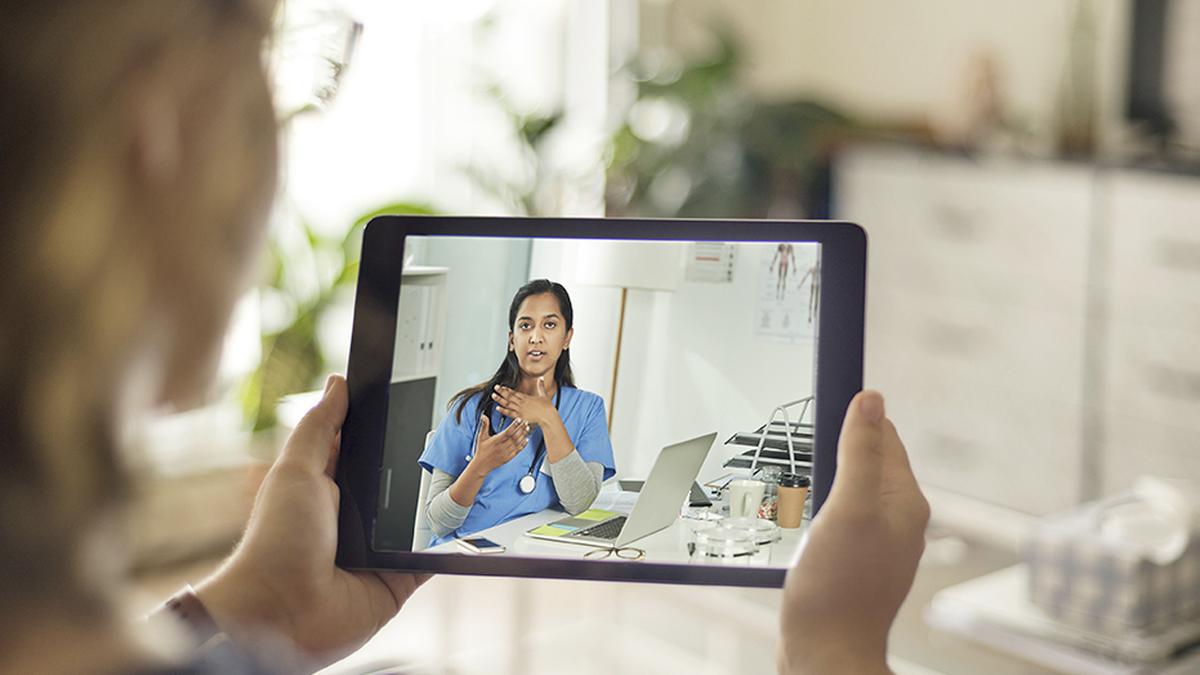
How teletherapy empowers patients with access and affordability Premium
The Hindu
Teletherapy offers convenience, accessibility, and anonymity, but face-to-face therapy provides personalized, empathetic, and non-verbal communication benefits.
The advent of teletherapy has meant a compound metamorphosis for the paradigm of mental health. This trend has precipitated a discourse among mental health professionals and patients regarding the relative efficacy of teletherapy versus face-to-face psychotherapy. With the Indian government’s Tele-MANAS scheme gaining increasing momentum and popularity, the delivery efficiency of teletherapy is being scrutinised even more than before. There is no doubt that there are a number of benefits that teletherapy brings, to enable access and reach more people than physically possible, advantages that seem particularly dear, after the pandemic. However, while acknowledging the reach, it is important to have a sense of the not-so ameliorative effects as well.
Technology-assisted therapy has made it possible for therapy to be delivered remotely aka teletherapy. This means that one does not have to drive down, or make the journey to the therapist’s clinic, but can access therapy from the convenience of their home. Teletherapy can reach those individuals from underserved areas, and has been efficacious in catering to those who have mobility issues. Teletherapy also helps those with hectic schedules who may not find the time to travel to therapy sites or people with a phobia of new places, or those with social anxiety.
At the heart of the issue is this: a therapeutic relationship is an intricate, intimate one. The one receiving therapy is in a space of emotional vulnerability, to be able to reap fruits from the sessions. This means that the encounter with the therapist can go very well, or go south. It may take a few tries, before finding the therapist with whom you fit in well with a seamless working relationship. If someone in Mumbai was to find the right therapist for themselves from Chennai, a lengthy commute or relocation is overcome with the ease teletherapy provides. The vulnerability in receiving therapy is sometimes compounded by an individual’s apprehensions about being subject to shame or stigma. Although India has made strides in making mental health help more accessible and socially acceptable, there is still a long way to go in terms of getting rid of the stigma of consulting a doctor for mental health issues. Here, teletherapy allows the convenience of an added layer of anonymity, alleviating concerns about being seen accessing mental health services.
There are definitely advantages. For instance, Karan, a 30-year-old doctor from Kerala, struggled with the stress of being in the frontline during the pandemic. He struggled with a diagnosis of depression, anxiety and work burn-out. He was able to make full and complete use of the Indian government’s Tele-Manas online counselling scheme from the comfort of his home, he says. Another 35-year-old homemaker from Maharashtra who lost her 7-year daughter to COVID-19 was able to cope with the loss of her child with the help of this helpline, which came at the right time, providing her with a solution when she found it difficult to meet too many people.
The traditional paradigm, the stalwart of mental health treatment for several decades now, has been face-to-face psychotherapy. This also calls for a conventional, stereotypical therapist couch, with the person getting help sitting or lying, speaking about what troubles them most. The benefits are many. To begin with, being face to face with your therapist enhances access and receipt of your therapist’s personable, empathic energy output. Similarly, the therapist can read the patient’s non-verbal cues such as body language, gestures, and so on which deeply complement the patient’s verbal accounts of their feelings and thoughts about things. The therapist gets to hear the unspoken, and can gain a holistic understanding of the patient’s problems. The success of a fruitful therapy relies heavily on a well-founded therapeutic relationship. This comes from trust and a smooth rapport. These are positively fostered in face-to-face interactions.
A therapeutic session is tailor-made to an individual’s needs. Although the principles of therapy can be used as a generic template for all patients, no two patients present with the same needs and therapy is always individualised. This means that the sessions must be made more personalised, interactive, or delivered in specific ways to support the patient receiving this. An individual struggling with PTSD from being displaced from their homeland due to war will present with significantly different needs to another individual struggling with PTSD from being the victim of long-term domestic violence. Although both present with the same diagnosis, the approach, the way the communication and conversations are structured, will be different. It is more likely this happens with face-to-face therapy.
If you are considering teletherapy, some of the questions you may want to consider are: Do you prefer to have an in-person connection tinged with deep rapport? Would you be comfortable with limited availability of sessions and sometimes changes to appointments based on weather or transport issues? Do you find yourself financially stable to be able to pay recurrent, high rates? If the answer to all this is a yes, then you would benefit the most from face-to-face psychotherapy.

The Climate Incubation Hub will primarily focus on start-ups working in key environmental areas such as climate, nature and plastics circularity. This will include regenerative and climate-smart agriculture, waste-to-value technologies to reduce emissions, alternative energy and clean technology, bioenergy & biomass solutions, and more




















 Run 3 Space | Play Space Running Game
Run 3 Space | Play Space Running Game Traffic Jam 3D | Online Racing Game
Traffic Jam 3D | Online Racing Game Duck Hunt | Play Old Classic Game
Duck Hunt | Play Old Classic Game










